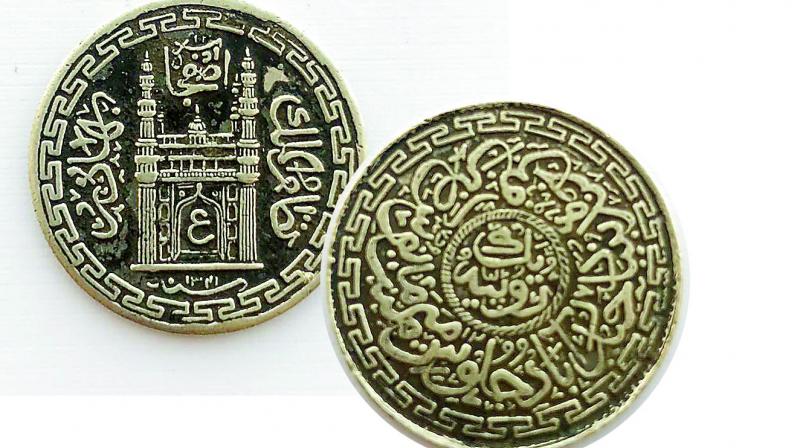To Muscat, with love

A coin speaks a thousand words and can document the rise and fall of an empire. On a recent trip to Muscat (Oman), Arvind Kumar, IAS, was pleasantly surprised to find coins with the Charminar inscribed on them at a local souq (flea market).
“I was in Oman officially to understand the spatial planning done for Muscat city. As a part of the research we visited the Matrah Souq to study how to maintain a heritage market. And that is where I saw these coins being sold,” Kumar recalls.
He bought one of those coins as a souvenir and posted the picture on Twitter asking his followers to recognise these coins. It was not long before the city’s coin-collecting enthusiasts chanced upon the tweets. Most of the twitterati recognised the coin as a commonly used ‘ek rupaiyah’ from the Nizam’s era of 1923. Kumar elaborates, “This coin was used for trading with Oman and it shows the significance Hyderabad and the Nizam had in the region’s trade. There were at least 50 such coins in the souq.”

Explaining the inscription around the Charminar emblem D. Murali, a Twitter user said, “Asaf Jah (top), Bahadur (left), Nizam Al-Mullk (right) and ‘Ain’ (Urdu alphabet for “O, initial of “Osman”) in the doorway) (sic).”
Most also mentioned that the coin was heavily in use during the period of Mir Osman Ali Khan Bahadur.
Historian Sajjad Shahid said that the coin is ample evidence that while the trade relations between Hyderabad and Arabian countries were very well-known, there was also a large population of Arabs in the city during the Nizams’ rule. He further said, “The trade links with Saudi Arabia and countries like Oman are fairly ancient. And it was pearls that were heavily traded. However, during the medieval period there was a very strong presence of Arabs in the south of India. Every kingdom had an Arab battalion, irrespective of whether they were Muslims or Hindus. Vijaynagar had a 10,00,00-strong battalion, Madura had 10,000 and so on.
They were mercenaries who were brought in for the simple reason, that kings in those days did not trust their own people. They wanted people who were not involved in local politics. So these Arabs would get their whole tribes and settle down and they would relive these links constantly. The older chiefs would go back and send young blood. And this was also one of the main reasons tht these local Hyderabadi coins can be found across the globe!”

